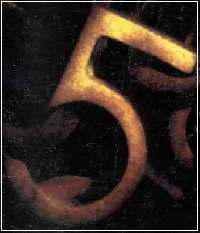 You have probably spent a large part of your elementary education learning about numbers...
You have probably spent a large part of your elementary education learning about numbers...
Summary: What Are Numbers & Functions?
 You have probably spent a large part of your elementary education learning about numbers...
You have probably spent a large part of your elementary education learning about numbers...
By now, you have probably spent a large part of your study of precalculus learning about functions...
And yet, it still seems fair to ask: What are they? What do they do for us? This lesson has hinted that our knowledge of numbers and functions may be far from complete.
Numbers, of course, have a very long history, and for good reason. The number concept, in any of the forms that have developed, helps us to classify the many sorts of "many" that we experience. Whenever we "count", or struggle to find new ways to count, we are attempting to order the world's chaotic data.
Still, there are so many numbers: Natural numbers, integers, rational numbers, real numbers, complex numbers... Are there more? Indeed, mathematics has found use for many other number systems. They include:
Which number system do we use? That depends, of course, on what we wish to count.
Functions are equally difficult for us to finally characterize. We call them input-output rules, models of cause-and effect, descriptions of relationships and patterns. It isn't surprising, with such a general conception, that we need many varieties of functions to accurately describe the relationships we observe.
Every question of "Why?" asks for a cause, and any adequate answer must connect cause and effect with a function.
Needless to say, numbers and functions are among the most fundamental objects of study in mathematics. Their prominence in precalculus and calculus is only the tip of the iceberg.
|
...finally, he said: "This is really great stuff! And I guess the old alphabet ISN'T enough!" — Dr. Seuss, On Beyond Zebra |
|
|
|
|
...to Exercises |
| Back to Contents | ||